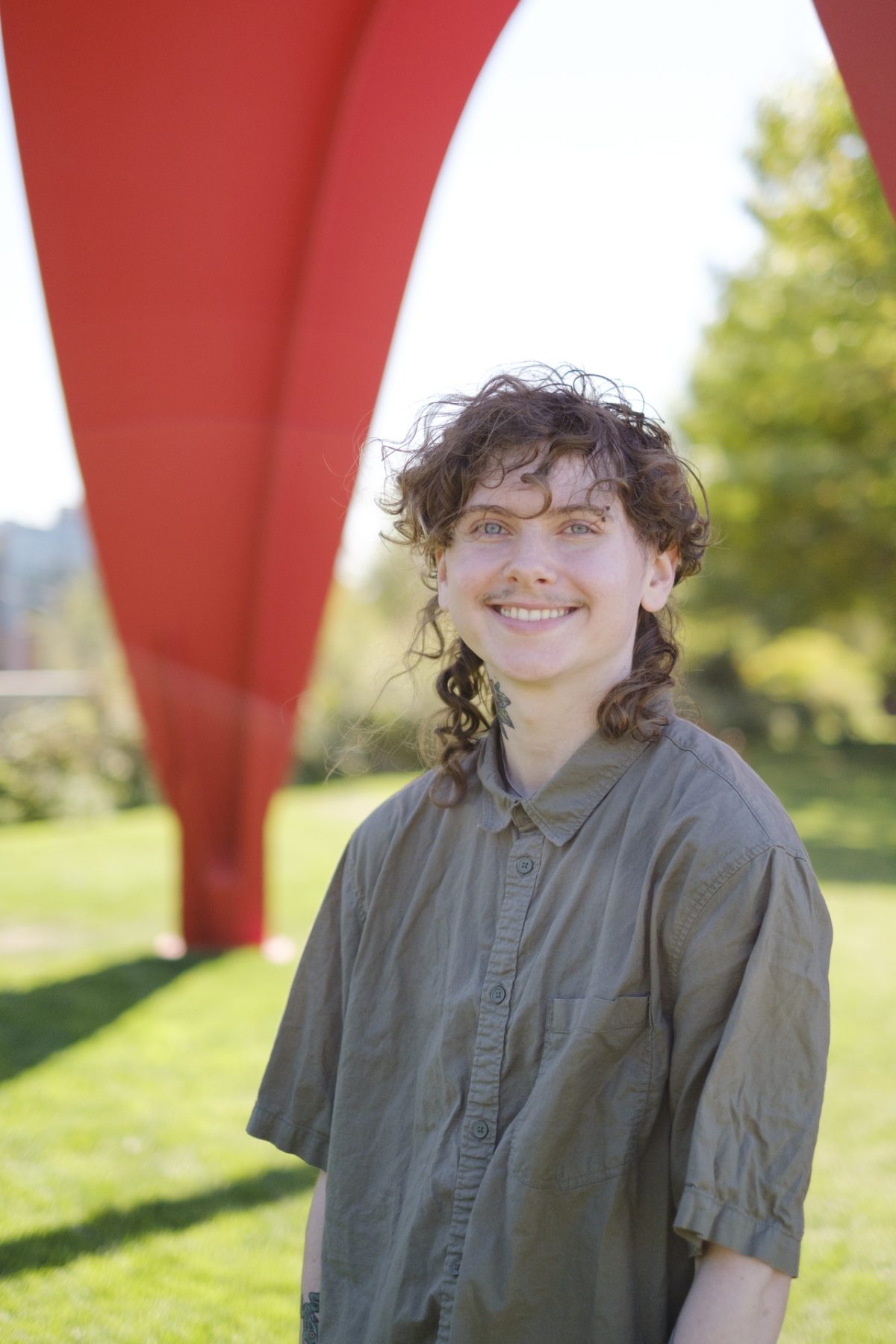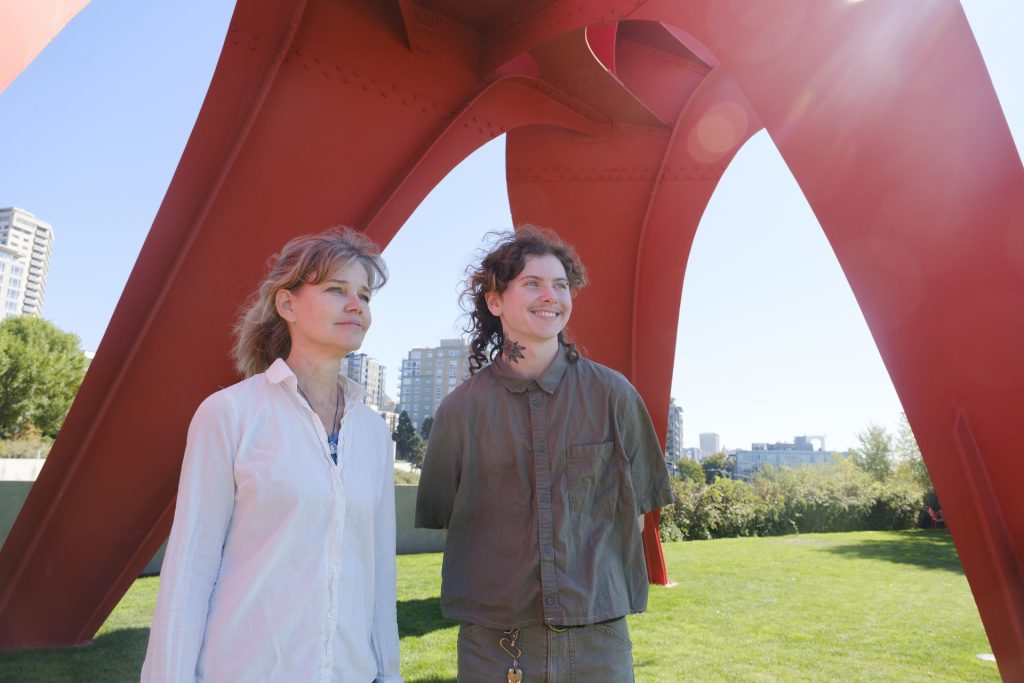Transforming My Artistic Practice: Emerging Arts Leader Andy DeLapp Reflects

My application to become a SAM Emerging Arts Leader was a shot in the dark. As an oil painter, object conservation seemed out of my realm. When I was finally offered this internship, however, I felt like I finally had a chance to explore a new aspect of the art world.
Unlike painting, the goal of art conservation is to not grab the attention of the viewer. I dove into projects with the hope that viewers would not see the countless hours I spent chipping away at flaking paint or the brush strokes in my wax applications. An art conservator is a kind of secret hero, working in stealth to make it seem as though all artworks on view have always been bright, shiny, and untouched by time. As a SAM intern, I grew familiar with employing vastly different treatments to an assortment of objects and sculptures.
While working alongside Liz Brown, SAM Senior Objects Conservator, I had the opportunity to help reassemble Me and Pops (2019) an artwork by American contemporary artist Aaron Fowler. It took precision and many hands to lift the plywood backing—when handling art in such an intimate way, I started to notice things that the average viewer might not. I needed to be aware of weak points, sharp edges, and even the fibers of the organic material. Many of those details revealed evidence of the artist’s hand. While thinking through these small details I felt like I was in a conversation with the artist, rather than simply handling an object.

I was also able to learn how to treat smaller objects in the museum’s conservation lab with Geneva Grisworld, SAM Associate Object Conservator. I gained insight into the research and documentation that conservators are required to complete before treating any object in the museum’s collection. Focusing on an 18th century French mustard cup, I took care in documenting every feature, scratch, and dent. I then made a mixture of calcium carbonate and ethanol to delicately remove the tarnish layer by layer. Slowly, and much to my satisfaction, the dull orange-tinted surface transformed into a dazzling silver. I made my own file on The Museum System (TMS) to document the cup’s condition, treatment, and analysis. I took a lot of joy in researching the history of mustard cups, especially discovering that this particular mustard cup was likely missing a spoon!
As an artist, I now think about how my own two-dimensional painting practice relates to object conservation. I think about my methods, the paints I use, and the craftsmanship of my hand-stretched canvas. I ask myself, “Will future conservators need to re-tension my canvas? What can I do to prevent paint lifting in the future? Should I note the pigments used in case the paint flakes?” The behind-the-scenes look at art conservation I received as a SAM Emerging Arts Leader has shattered the barrier that once sat between myself and the intimidating white museum walls.
I am extremely grateful for my experience as a SAM intern and am eternally grateful for the guidance offered by my supervisors on the conservation team. As my internship comes to an end, I will be pursuing jobs in art handling, and carrying my knowledge of conservation into my painting practice. I take pride in contributing to my community by caring for our beautiful art, and I sincerely hope my work at the Seattle Art Museum is unseen by the viewer.
– Andy DeLapp, Emerging Arts Leader Intern in Conservation
Photos: Chloe Collyer © 2024 Calder Foundation, New York / Artists Rights Society (ARS), New York.